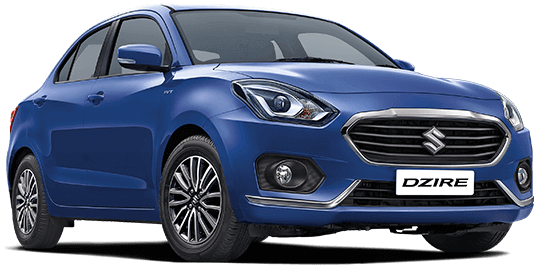
The year was 2009, and my brother like every techie was hunting for a car, not just any car, one with a dickie specifically. For Indians, dickie or the boot is not just another colonial vocabulary hangover, it is rather a symbol of status. And this demand was addressed at the best format by none other than Maruti, with their Swift Dzire, the re-booted version of their most popular hatch, Swift. But, Dzire never came out of its maiden name, for people it was still “Swift with a boot”, however, it did manage to sell very well in the market. And after years of its launch, Maruti has finally tried a hand at separating Swift from Dzire, literally.
The new Dzire is marketed without the name of its hatchback version and has undergone a massive shapeshift inside out. The new version has undergone a positive transformation from the glued boot car into a proper sedan. With curvy body lines and a snappy front grille, the car stands out from its competitors.
The front grille is closer to the bottom and reminds us of Maserati in its design. Maruti has boldly adopted a style that would make the car stand out in Indian roads. The headlamps are the only external feature that it has borrowed largely from its predecessor. The top end version of it, Zxi+/Zdi+ features projector headlamps with DRL integrated with indicators. The front bumper is integrated into the front fairing and accommodates the fog lamps and chrome accents really well.
The vehicle carries a set of indicators in the ORVM and body colored door handles. The doors have undergone major changes in terms of the size, it is no longer bulky and heavy. Company officials commented that despite losing weight especially in the doors, the car is safer than its predecessor and is designed in accordance with the upcoming crash test regulations. The hind side competes with the front side in terms of looks, it has a Suzuki Kizahi inspired design with LED-embedded lights and a chrome fairing that connects both the backlights. The boot is 378 litres in capacity and can easily hold the weekend getaway luggage of a family with ease. Due to a reduction in the ground clearance, the vehicle appears to be a little nearer to the ground and makes it sportier in appearance.
In the inside Maruti has extensively redrawn the lines and shapes, it appears leaner and sportier and features wood accents that blend comfortably with the interior plastics. The flat-bottomed steering has integrated control buttons with better feedback and ergonomics. The instrument cluster is modern but is not much different from its predecessor. And at the multimedia front, the car will get Maruti’s newest touch-screen systems, complete with navigation and a mobile interface. What is disappointing is that the lower part of the dash has not received any changes and looks exactly like the older version. But Maruti has given it a new gearbox and specifically the automatic version has a more efficient system in place.
There are improvements in the seating, it is ergonomically better in many aspects, the driver seats are height adjustable and has comfortable side supports. It has a bigger room for the shoulder and leg all around.
The engines are the same, with a 1197 cc petrol and 1248 cc diesel versions offering 113 Nm and 190 Nm at 4200 rpm and 2000 rpm respectively. There are performance differences due to the HEARTECT body, which the company claims to be lighter and stronger, they also claim a mileage of 22 Kmpl for the petrol variant and 28.4 Kmpl for the diesel version. The engine sound is refined and smoother initially compared to the older version. Like every Maruti, it is easily maneuverable in a city scenario. And on the safety front, ABS, EBD dual front airbags, and an ISOFIX child safety system are standard features. The vehicle is priced aggressively between 5.40 to 9.38 lakhs taking competitors like the Hyundai Xcent, Tata Tigor, Volkswagen Ameo and Honda Amaze for a hot drive.
Comments
Post a Comment